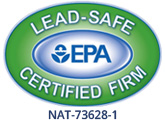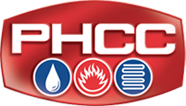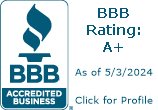Why Won’t My Heat Turn On?
 When temperatures drop and you feel a chill in the air, you turn on the heating system in your home, hoping for warmth. Yet you do not hear the heat click on or the air that blows out feels cold. If you wait for the furnace to warm up but your home still feels chilly, consider the following reasons why your heat won’t turn on.
When temperatures drop and you feel a chill in the air, you turn on the heating system in your home, hoping for warmth. Yet you do not hear the heat click on or the air that blows out feels cold. If you wait for the furnace to warm up but your home still feels chilly, consider the following reasons why your heat won’t turn on.
Wrong Settings
The first time you turn on the heat all season, your furnace or HVAC system might not be using the correct setting. In these cases, someone previously turned off the power switch to the heater so it’s not turning on at all. You may also need to turn the fan to “on” to force the system to start blowing hot air.
In other cases, the thermostat could be set too low and not detecting a drop in temperature significant enough to activate the heater. Check the thermostat setting and adjust its threshold relative to your home and the season.
If your thermostat doesn’t appear to detect the temperature at all, a power outage, no Wi-Fi connection or a dead battery may be preventing it from working or fully communicating with your HVAC system.
Filter Issues
Another common issue, you haven’t cleaned your furnace or HVAC system filters in a few seasons. Not only does the accumulated debris block airflow and restrict any warm air you might feel, but it can also prevent the furnace from starting at all. Especially if you’ve been negligent with maintenance, the vents and registers may be clogged. You also risk the system overheating and shutting down.
To address this issue:
- Check all vents to make sure furniture, rugs and other potential obstructions are not blocking airflow.
- Clean or change the filter.
- If you continue not to feel air, a professional may need to examine your system’s operation and ducts.
Blocked Airflow
In the event you’re still not feeling warm air or hearing your system turn on after replacing the filter, something might be blocking the ducts or significantly reducing airflow. Common concerns include gaps between segments of your ducts that need to be sealed, improperly sized ducts or a physical obstruction like a rodent’s nest preventing proper airflow.
Gas Line Issues
If you’ve gone through the recommended steps and the heat still won’t turn on, your furnace might not have a source of gas. As such, it doesn’t have enough fuel to ignite and provide you with heat.
Check the shut-off valve for the gas and also see if other gas-powered appliances in your home operate as expected. The supply valve should be turned to “on”. Additionally, check for obstructions along the gas supply line to the furnace.
If the gas is turned on, your furnace may be going through too much fuel – this can be a sign of an improperly calibrated furnace. As a prelude to not supplying hot air, your gas bills skyrocket and the appliance frequently overheats.
Power Issues
Your furnace may not be receiving any power. Common issues include a tripped breaker preventing your furnace from receiving the current it needs to operate or the direct power switch on the furnace has been turned off. You may need to reset a tripped breaker, then turn on the furnace’s power source.
Defective Pilot Light
In this scenario, your furnace is making a clicking sound as it tries to fire up but you don’t feel any heat. If the pilot light has blown out, you can try to relight it yourself to see if your furnace starts generating heat again. Especially if this is your first time using the furnace this season, the pilot light needs a sufficient supply of gas to ignite and sustain a flame.
However, the issue might go beyond the light to a dirty or faulty sensor. Consider cleaning the sensor, then seeing if the pilot light ignites or have a professional do this for you.
Defective Parts
Your furnace or heater might have one or more defective components, including:
- The capacitor, which controls the energy level that kickstarts the heating cycle. Capacitors can stop working due to short cycling or break down after years of use.
- The draft motor, also known as a draft inducer, helps manage gas in the heat exchanger. This component can burn out if overworked or become clogged with dirt.
- The flame sensor, which can become dirty and prevent the combustion process.
- A cracked heat exchanger can greatly impact furnace performance. Damage to this part may cause restricted airflow and carbon monoxide to leak into your home.
In addition to these factors, a lack of maintenance places greater strain on your furnace, often affecting the blower, heat exchanger, filters, burner and flame sensor over time. Damaged components coupled with accumulated debris can restrict the air flowing through your system and contribute to overheating. You may additionally find that your furnace turns on, then quickly shuts off.
Concerned about the performance of your furnace? Have our HVAC technicians diagnose the issue and make the necessary repairs. To schedule an appointment, contact MJ Fahy & Sons today.




